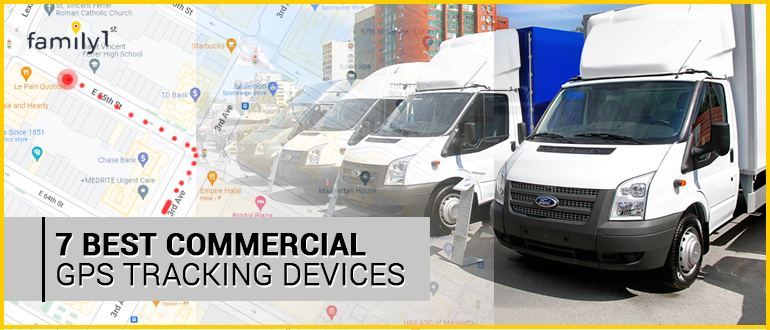Key Takeaways:
- GPS trackers work by connecting to GNSS satellites, using trilateration to find the exact location, and sending the data to a server for real-time or later access.
- Using satellite technology, these devices help track the accurate location of vehicles, objects, or people.
- Geofencing creates a virtual boundary and triggers alerts when a registered device enters or leaves the area.
- Families, businesses, and individuals use GPS trackers for safety, navigation, fleet management, and asset tracking.
Table of Contents
What are GPS Tracking Devices?
GPS tracking devices help track the real-time location of vehicles, objects, or even people.
These devices are incredibly popular in vehicles for fleet management and theft prevention. They also play a key role in logistics and personal safety, making monitoring movement and ensuring security easier.
By sending location data directly to smartphones, tablets, or computers, GPS tracking devices make it simple to stay informed. Whether for navigation, tracking assets, or keeping loved ones safe, they are a practical and versatile technology.
Knowing how GPS works makes it easier to see how useful it is. This blog will explain the basics, how it works, and why we use it every day.
Also see: Everything You Need To Know About Satellite GPS Tracking System.
How Do GPS Trackers Work?
![]()
GPS trackers connect to the Global Navigation Satellite System (GNSS) satellites to determine location. Trilateration is used to calculate the exact location of GPS trackers by measuring the distance from at least four satellites.
The tracker records latitude, longitude, speed, and direction. This information is then transmitted to a central server using cellular networks, satellite modems, or other communication systems, allowing users to access it in real time or review it later.
Some GPS trackers provide real-time updates and active tracking, while others store the data for later viewing, called passive tracking. Both methods ensure GPS trackers are reliable tools for location tracking and monitoring.
What is Geofencing, and How Does It Work?
Geofencing is a location-based technology that uses GPS and Wi-Fi to create a virtual boundary around a specific area. This system triggers a pre-set action whenever a device with an internet connection enters or exits the defined boundary.
To set up geofencing, the administrator uses GPS-enabled software to draw a boundary around a target location, such as a 200-foot radius on Google Maps. When a registered device crosses this virtual boundary, the system sends an alert or initiates a response.
Geofencing is widely used to monitor transportation, improve logistics, provide accurate ETAs, and ensure family safety. It also finds applications in marketing, security, social networking, and workforce management, making it a versatile and valuable tool.
Who Needs a GPS Tracking Device?
GPS tracking devices are important for personal and commercial use. They provide safety, convenience, and efficiency for various needs.
Families and Individuals
- Parents: GPS trackers help parents know their child’s location during activities or outings. These devices can be used in phones, wristbands, or even clothing.
- Elderly Family Members: Families use trackers to monitor elderly relatives or those with medical conditions like Alzheimer’s or dementia.
- Pet Owners: GPS trackers on collars or leashes help owners find their pets if they wander off.
Businesses and Industries
- Transportation and Logistics: Businesses use GPS tracking to monitor vehicles, improve delivery routes, and save fuel.
- Efficiency and Sustainability: GPS devices help companies work better and reduce their environmental impact by managing resources wisely.
Personal Use Cases
- Teens and Young Adults: Compact trackers can be placed in cars, bikes, or backpacks to keep track of teens or young adults.
- Health and Safety: GPS devices are helpful for individuals with medical conditions to stay safe and connected.
Conclusion
GPS tracking devices use satellites and smart technology to provide accurate location details. Features like trilateration and geofencing make tracking simple and effective.
These devices are helpful for personal safety, business needs, and navigation. Their reliability has made them an important part of daily life and work








Next
Previous